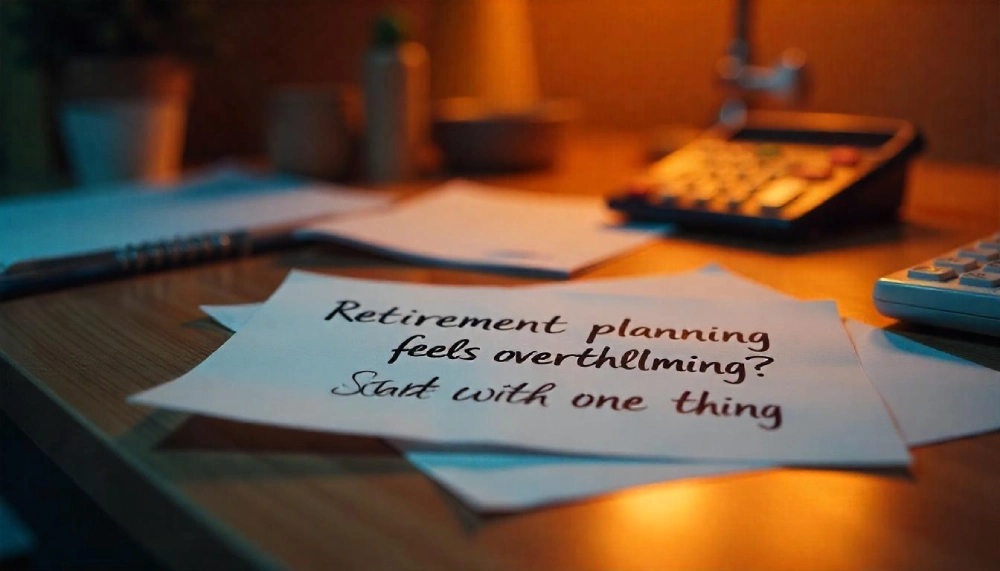Thinking about retirement can feel like staring at a giant, unsolvable puzzle. How much do you need? Are you on track? Is it too late to start? The sheer volume of advice, tools, and financial jargon often leaves people stuck at square one. But here’s a simple truth: you don’t have to map out your entire retirement in one sitting. You just need a starting point—and the easiest one is to run your numbers through an interactive super projection calculator. It won’t solve everything instantly, but it’ll give you a clearer view of where you stand, and that alone can shift your mindset from anxious to proactive.
Why Most People Avoid Retirement Planning
Let’s be honest—retirement planning isn’t exactly a thrilling Friday night activity. A lot of people delay it because they feel underprepared, think they’ve already fallen behind, or simply don’t know where to begin. The result? Years can pass before they actually start crunching the numbers. The trick is to stop aiming for perfection and just start with the basics. You don’t need to understand every investment option or government policy from the get-go. Begin with a ballpark understanding of how much you might need and how close you are to reaching it.
Clarity Beats Complexity
One of the most powerful things about estimating your retirement outlook is that it simplifies complex decisions. When you have a rough projection in front of you—how much you might have, what that equates to in monthly income, and how long it might last—it’s easier to make smarter, more informed decisions today. It’s no longer abstract. Suddenly, small changes like increasing your contributions, trimming unnecessary spending, or adjusting your retirement age make real, visible differences.
Know Your Numbers
Once you’ve used a projection tool to see where you’re headed, you can break your retirement planning into smaller, actionable steps. Here’s a simple approach:
- Track your super contributions: Know how much is going in each year and check if you’re eligible to contribute more.
- Estimate your future expenses: Think about what kind of lifestyle you want in retirement—not just surviving, but actually enjoying it.
- Factor in other income sources: Rental income, side businesses, or even part-time work can play a role in your retirement picture.
- Adjust for inflation: $50,000 today won’t buy the same lifestyle in 20 or 30 years, so be sure to account for that.
Don’t Assume It’s Too Late (Or Too Early)
Whether you’re 25 or 55, there’s always something you can do to improve your retirement outlook. Starting early has obvious advantages, but starting at all is what really matters. If you’re younger, small increases in savings now can snowball over decades. If you’re older, you might need to be more strategic—whether that means working a bit longer, cutting back in key areas, or downsizing your future plans—but meaningful progress is still possible.
Keep It Flexible
Retirement planning isn’t something you do once and forget. Life happens—people change jobs, start businesses, move cities, or have unexpected health issues. Your plan should grow and adapt with you. Revisit it every year or two. Update your assumptions. Look at what’s changed and what hasn’t. A flexible approach is more realistic and far less stressful than trying to predict everything decades in advance.
Use Tools That Make It Easier
There’s no shortage of tools out there, but the best ones are simple, clear, and allow you to experiment. Being able to change inputs like your retirement age, annual contributions, or expected returns gives you control and insight. When you can see how even small tweaks impact the big picture, planning becomes a lot more motivating—and a lot less scary.
Small Wins Add Up
The good news is, once you take that first step, momentum tends to follow. Maybe you start contributing just a little more. Maybe you finally roll over that old super account. Maybe you cut back on a few unnecessary expenses and redirect those savings. These aren’t huge lifestyle shifts, but over time, they compound—just like your investments. Progress builds on progress, and the future stops feeling so uncertain.
The idea of retirement might always feel a little intimidating. But it doesn’t have to be overwhelming. With a clear snapshot of your current path, and a willingness to make small but meaningful changes, you’re in a much better position than you think. Start where you are, use the tools available, and take it one step at a time. That’s all it takes to build a future you can look forward to.
